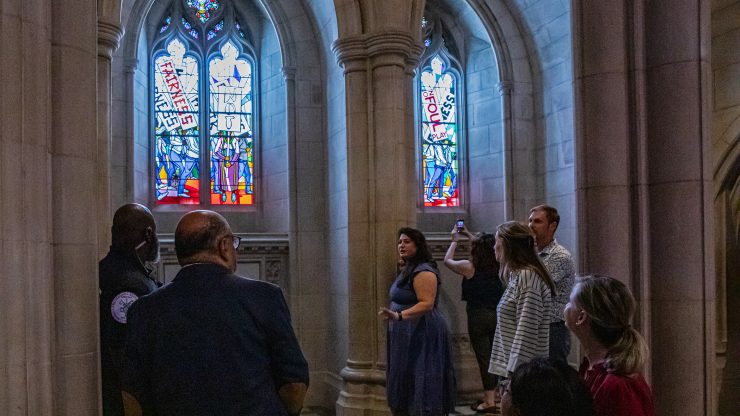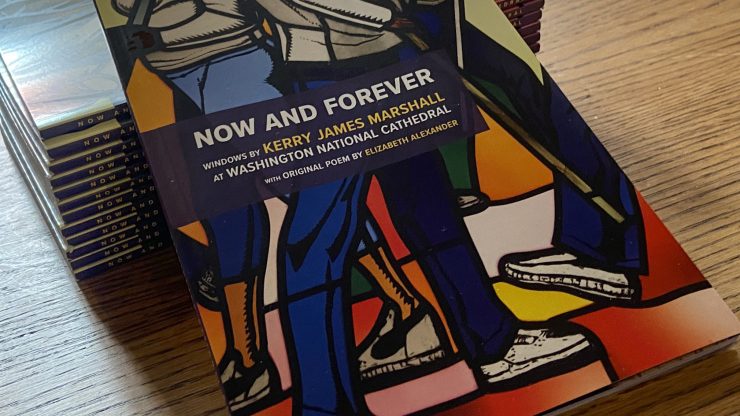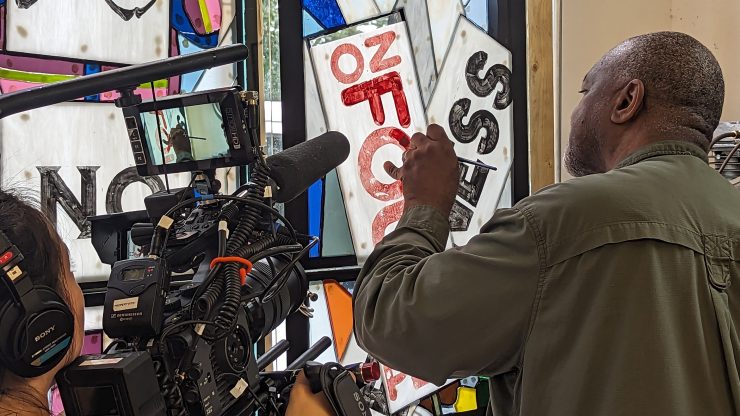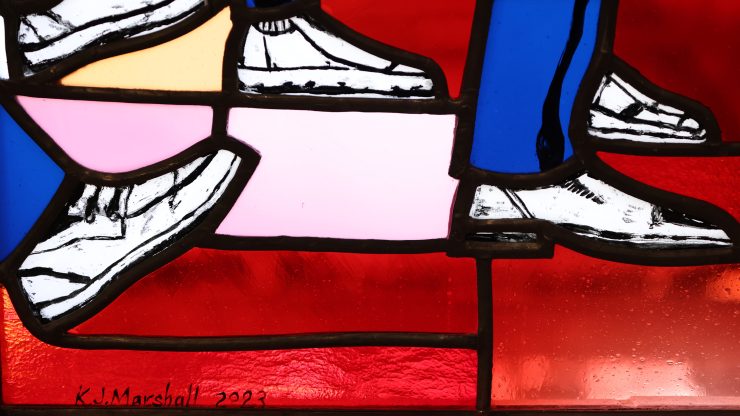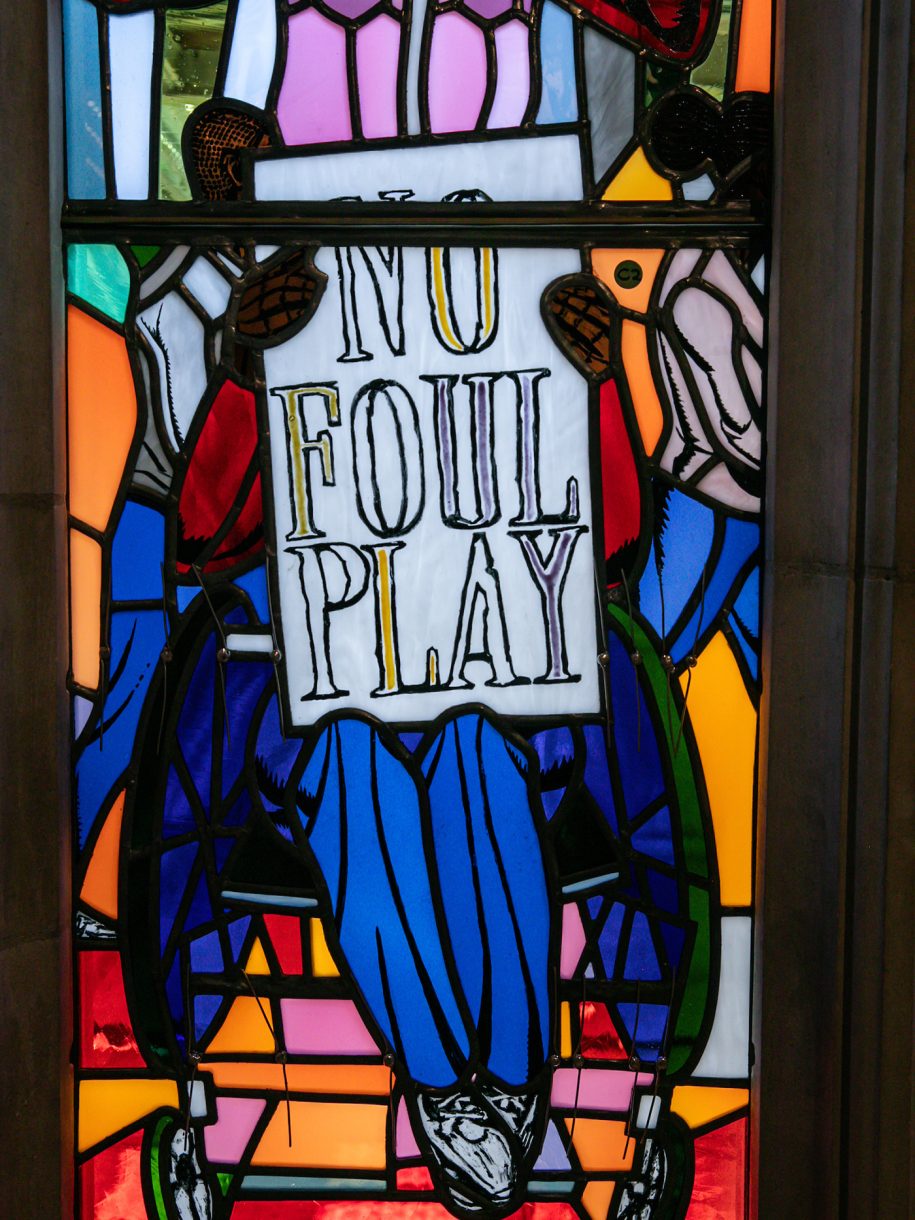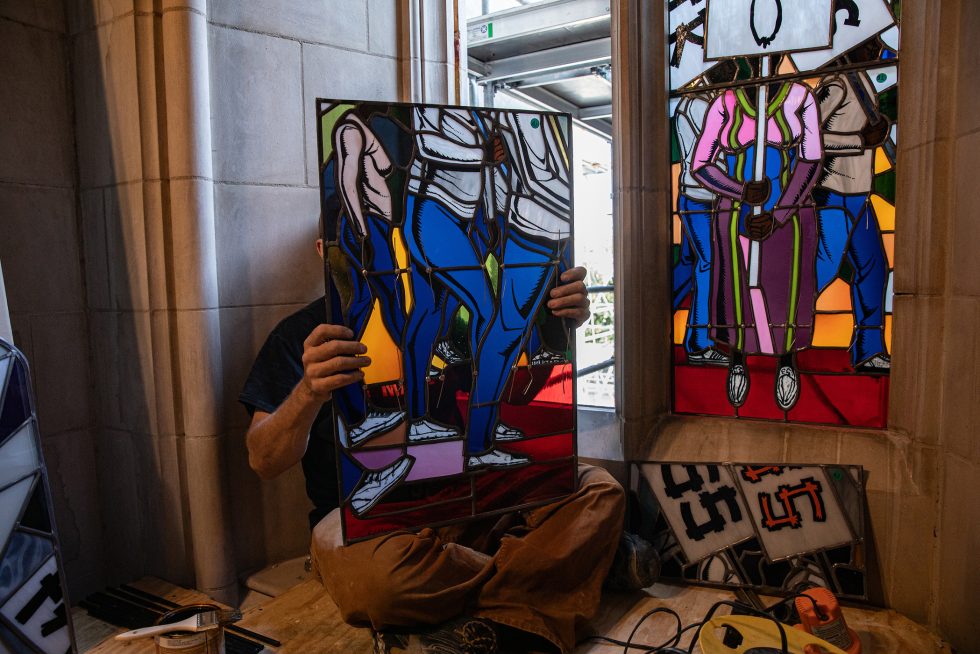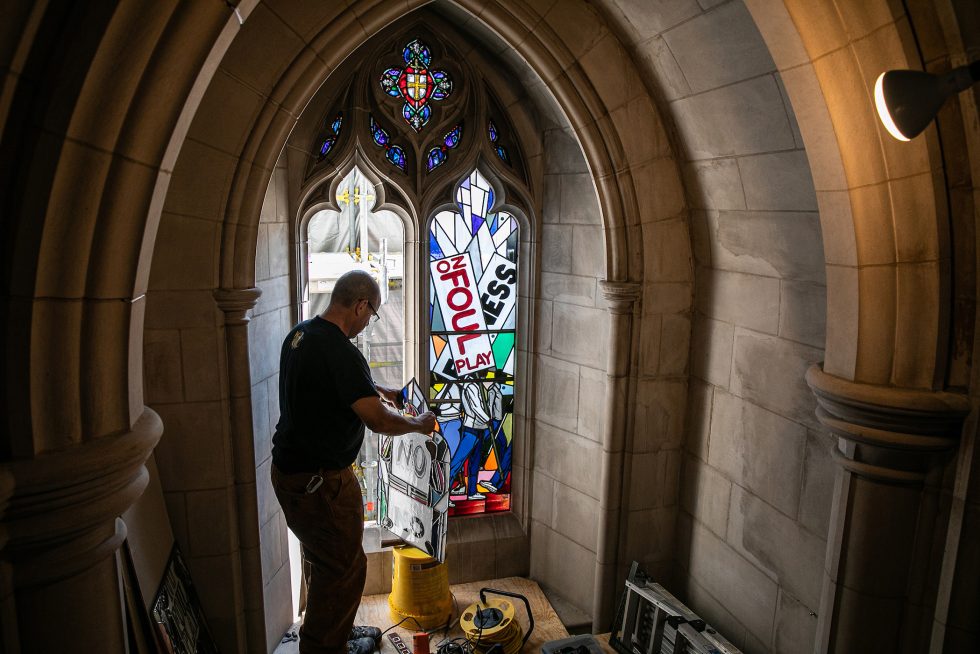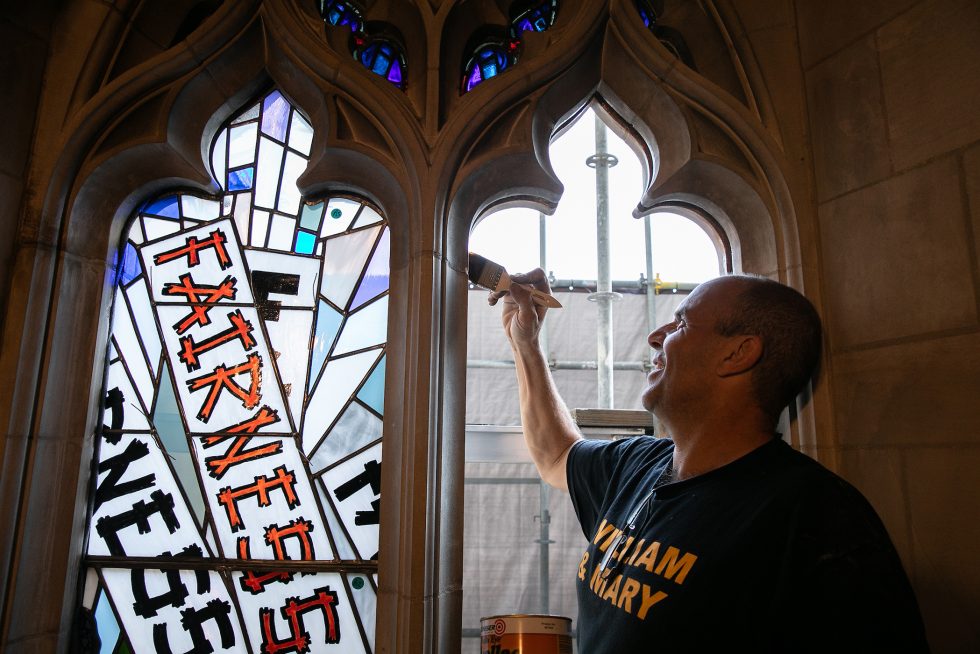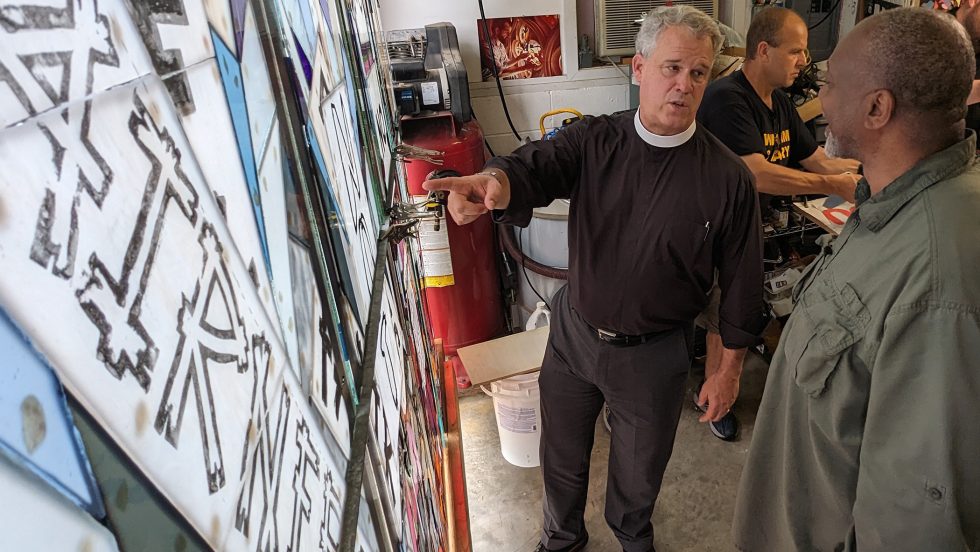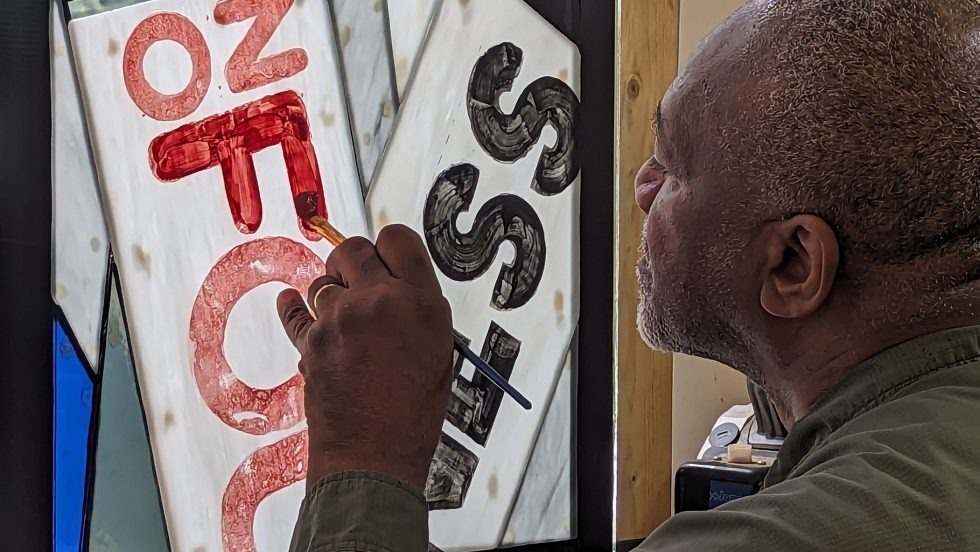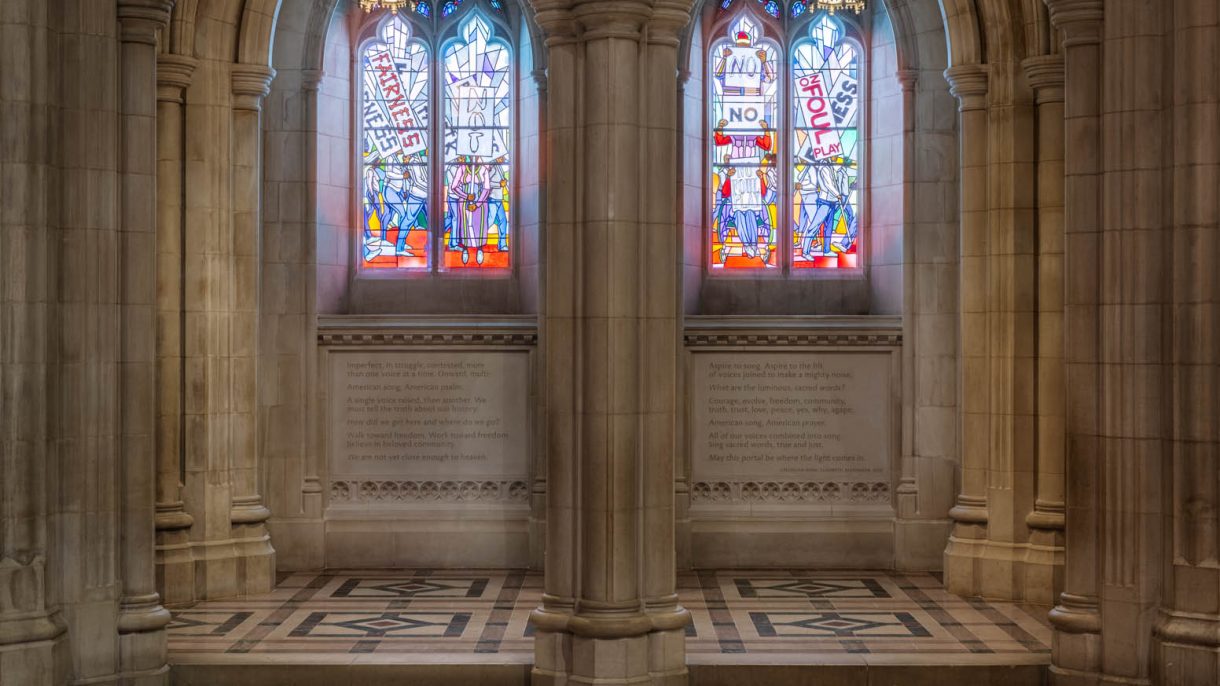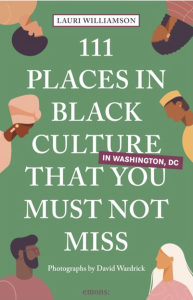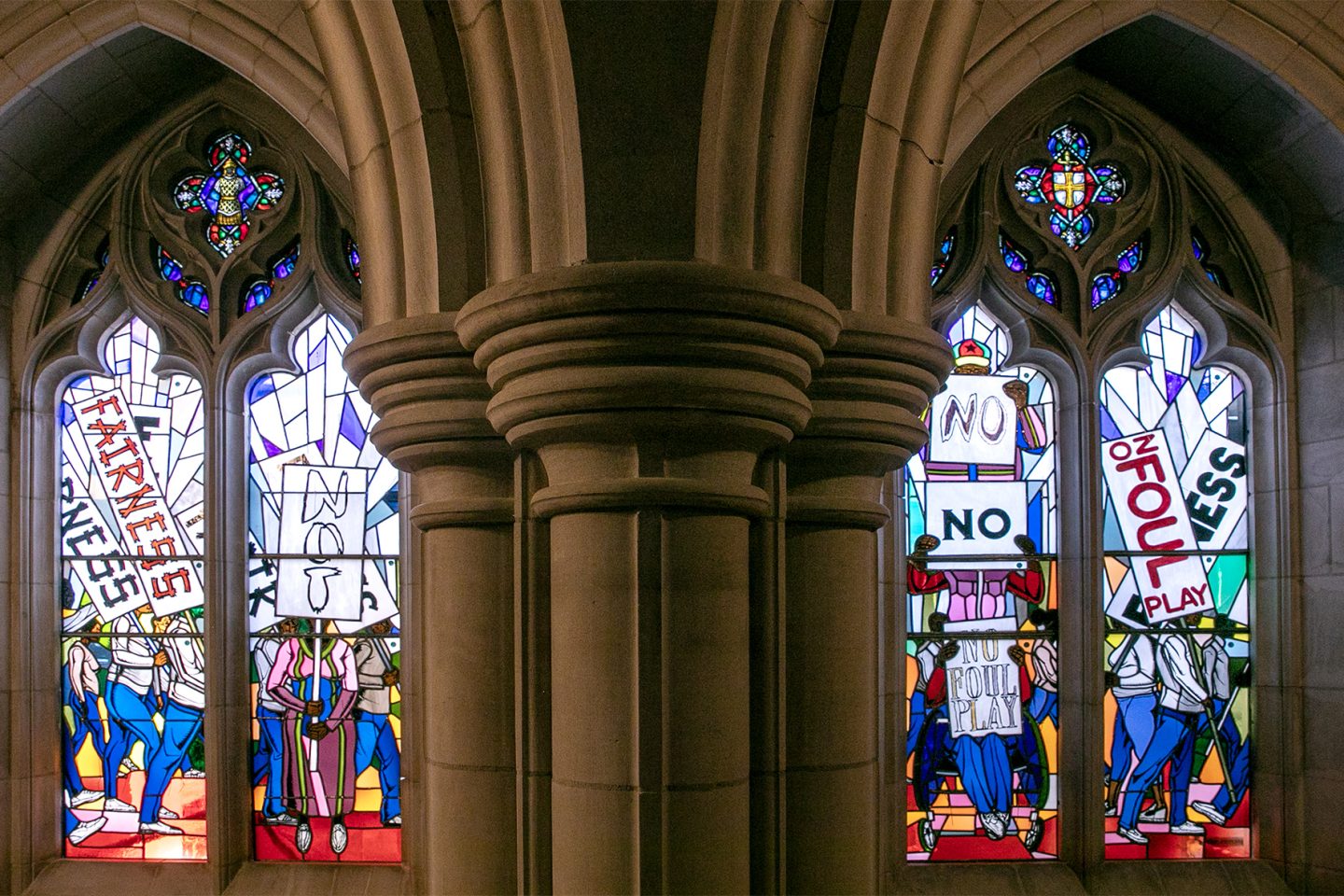
The Now and Forever Windows
Dedicated September 23, 2023
Introducing the Now and Forever Windows
Want to see the new windows? Visit during our General Sightseeing hours and see the Now and Forever Windows up close.
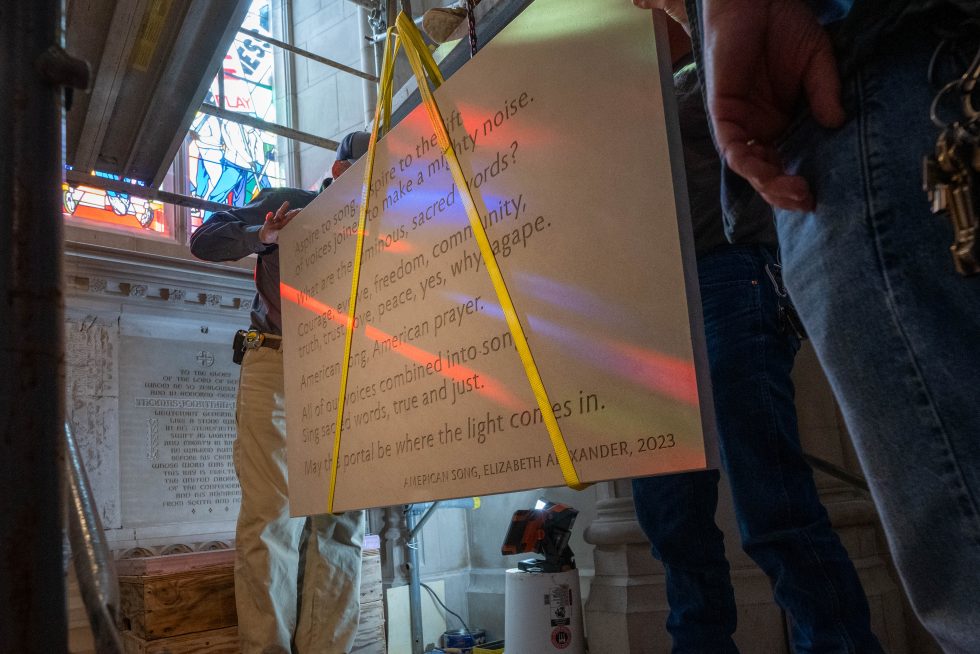
Elizabeth Alexander’s ‘American Song’ Poetry Tablets Installed
cathedral connects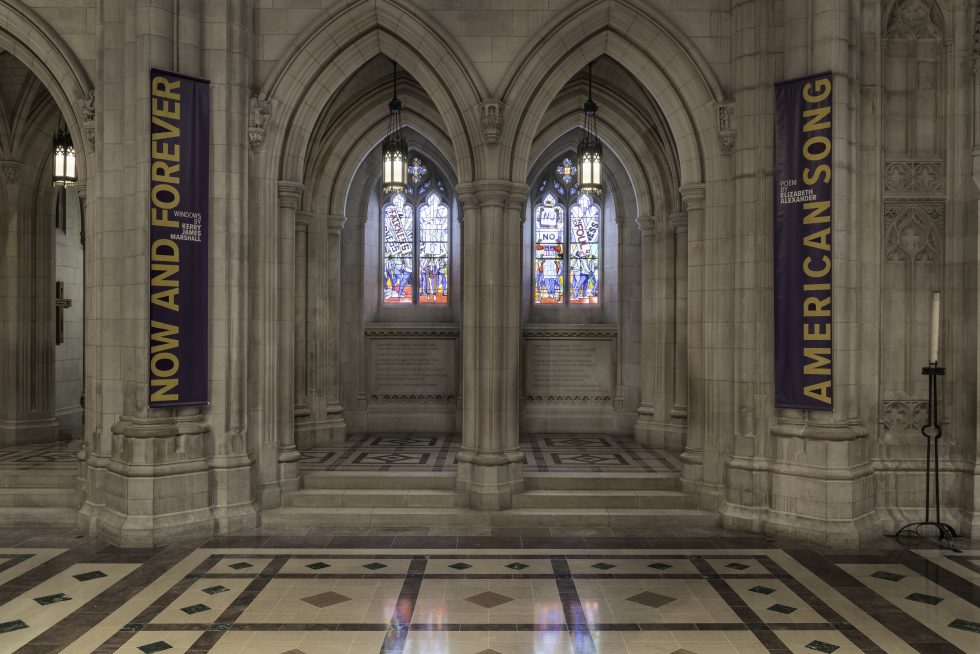
Now and Forever at Smarthistory
special feature
Now and Forever: The Book
digital version
The Now and Forever Windows
installation process, and first-look reactions.
Please share your thoughts and reflections about viewing and experiencing the Now and Forever windows.
Windows Feedback
Now and Forever Windows FAQ
Catch up on everything you need to know with answers to frequently-asked questions.
The Cathedral’s Now and Forever windows were designed by acclaimed artist Kerry James Marshall, and dedicated on Sept. 23, 2023. The installation of the windows follows eight years of discussion and discernment after then-Dean Gary Hall called for the removal of previous windows that honored Confederate Generals Robert E. Lee and Thomas “Stonewall” Jackson.
The new windows depict the ongoing fight for justice and fairness, using the familiar scene of a civil rights march. The figures are all anonymous, and the scene is not rooted in any particular historical event. The demonstrators carry hand-made signs asking for fairness and “No Foul Play.” According to Marshall, “Justice is not just a theme, but it’s always a pursuit. It’s not individual-oriented per se, but it’s an activity that people in groups participate in to bring about.”
In addition, poet Elizabeth Alexander has penned a new poem, “American Song,” to accompany Marshall’s windows. The poem will be hand-carved into limestone tablets and will be installed in 2024.
In 1953, the Cathedral dedicated twin windows that honored Lee and Jackson. The windows were donated by the United Daughters of the Confederacy as part of a larger campaign to memorialize and honor Confederate leaders, soldiers and ideals.
The initial call for the removal of the Lee/Jackson windows came from then-Dean Hall in 2015, following the deadly shooting of nine Black worshippers at Mother Emanuel AME Church in Charleston, S.C. The Cathedral formed a task force to study options for the windows’ future, and in 2016 the task force unanimously recommended that the Cathedral spend two years using the windows as a catalyst for discussion and discernment. Accepting the findings, the Cathedral Chapter (governing board), went a step further and ordered the removal of the Confederate battle flag from the windows.
In 2017, following the white supremacist rally in Charlottesville, Va., to protect a statue of Robert E. Lee, the Lee-Jackson windows were deconsecrated and removed. Dean Randy Hollerith and other Cathedral leaders felt the windows told an incomplete and misleading account of our history, and their presence in the sacred space of the Cathedral was a barrier to prayer, particularly for Black Americans.
The Cathedral committed to finding ways to offer a richer, more balanced expression of our nation’s history. In 2021, the Cathedral announced that Kerry James Marshall had agreed to create new racial justice themed stained glass windows, his first time working with stained-glass as a medium. In addition, Dr. Elizabeth Alexander agreed to pen a new poem that will be inscribed in stone tablets, overlaying the previous stone tablets that elevated Lee and Jackson to near sainthood.
The Windows Replacement Committee created this charge to the artists:
“We seek to tell a story of resilience, endurance, and courage that gives meaning and expression to the long and arduous plight of the African American, from slavery to freedom, from alienation to the hope of reconciliation, through physical and spiritual regeneration, as we move from the past to present day. The artist will capture both darkness and light, both the pain of yesterday and the promise of tomorrow, as well as the quiet and exemplary dignity of the African American struggle for justice and equality and the indelible and progressive impact it has had on American society. Each artist should respond in his or her own creative way to these ideals and aspirations, framing both the earthly and the divine, within the sacred space of the Washington National Cathedral.”
Marshall said he wanted to depict the ongoing and everyday march toward fairness. In his words, “They are not oriented around anybody, but they are oriented toward a process, toward an activity that is always ongoing.” The windows, he said, “are not dependent on any period of time or any movement in history or any particular individual. … I went out of my way to make sure you don’t become fixated on any one person. There’s no one person or celebrity that you could single out.”
In addition, the Windows Replacement Committee specifically called for windows that would reflect “the quiet and exemplary dignity of the African American struggle for justice and equality.”
Marshall leaves this up to the viewer’s interpretation, but there are two ways to consider this. In one view, the repetition of “No” and “Not” is a powerful and emphatic way to counter foul play or unfairness. In another view, the “No” is described as God’s powerful “No” to everything that the figures are protesting; it’s God’s No to unfairness, God’s No to injustice, God’s No to foul play.
The original poem “American Song” by Dr. Elizabeth Alexander can be experienced at Washington National Cathedral. It will be carved into the tablets beneath the windows in 2024.
Dean Hollerith convened a Windows Replacement Committee to help steer the vision, vet artists and consider design options. Marshall and Alexander were the unanimous choice of the committee, and their designs were approved by the Cathedral’s Facilities & Fine Arts Committee.
Marshall designed and sketched the windows at his studio in Chicago. The windows were fabricated by Andrew Goldkuhle at his studio outside Richmond, Va.; Goldkuhle’s father, Dieter Goldkuhle, fabricated more than 60 windows at the Cathedral before he died in 2011. Marshall made two visits to Richmond to refine the windows and to hand-paint details on the glass.
Marshall thought it was important for the past to have a “conversation” with the present, and to note in a small way what had been there before.
In his words, “I’m not so interested in completely erasing the history of the relationship of those windows of the Cathedral, and the replacement of the original windows with what’s there now. I’m OK with a little bit of tension. I mean, maybe I’m OK with a lot of tension.”
From 2021-2022, the Lee window was loaned to the National Museum of African American History and Culture for their temporary exhibit on Reconstruction. Both windows are currently being stored and conserved at the Cathedral. Final decisions about their use are still under consideration.
As part of the overall windows project, the Cathedral is conducting a comprehensive Iconography Review to account for all stories told in the Cathedral, and which stories have not been told. That work is ongoing.
Every figure from Scripture and history has something to teach us, even with their sometimes complicated and messy legacies. Our goal is that all art and iconography within this House of Prayer for All People reflect our aspirations to be a sacred gathering place where all Americans can see themselves reflected in its expanding art and iconography.
There is a difference between remembering our history and celebrating it, especially in a sacred space. Some monuments can become an impediment to prayer, and that was the case with the Lee/Jackson windows and inscriptions. Iconography should point us to God, not distract us from that divine encounter.
We believe that public monuments reflect our public values. At this Cathedral, we value an inclusive story about America and its history, one where everyone can see themselves reflected in the art and iconography.
We hope so! We believe that God can be found in all things, and that the values we derive from our faith can be expressed with both sacred and civic symbols. We do not believe you need a cross or other religious symbol to convey truths that find their roots in our religious beliefs.
The Cathedral is full of religious symbols, but also secular icons and representations. Our stained glass window that depicts the signing of the U.S. Constitution, for example, does not contain religious imagery, yet we believe God desires the promises of freedom and equality for all people.
Liberation from bondage is a constant theme of Scripture, and the struggle for civil rights and fairness that is depicted in the Now and Forever windows was rooted in the church. It was led by people of deep and abiding faith. That faith in God’s promise of freedom and deliverance is conveyed by the figures in the windows, and we hope it prompts questions about what each of us can do to carry that work forward.
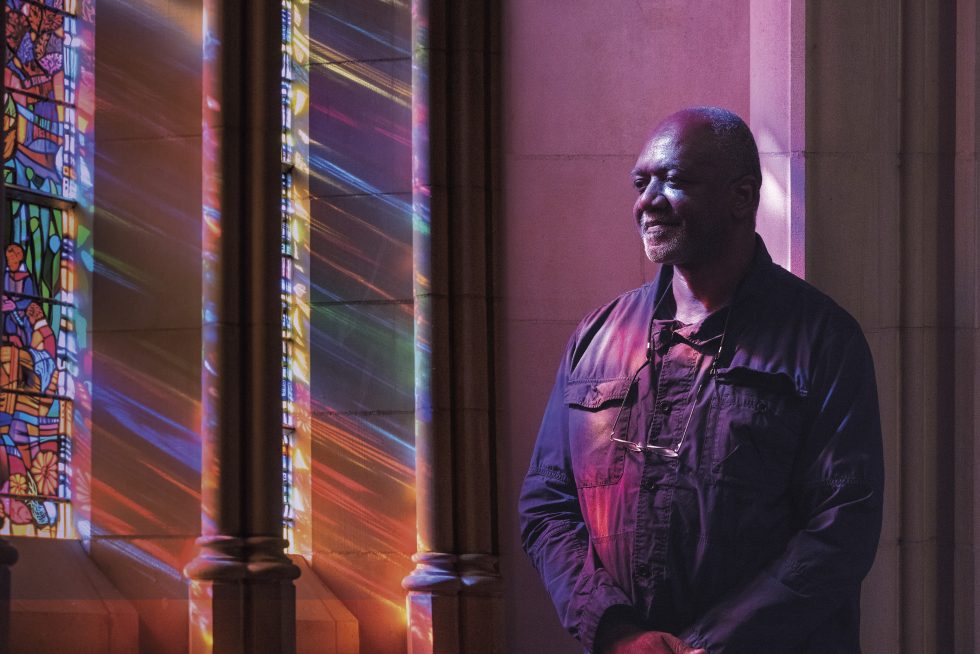
Public Programs
2016–PresentIn the Media
- For $18.65, Famous Artist Designs Racial Justice Windows for National Cathedral
- National Cathedral Chooses Artist to Replace Windows Honoring Confederates
- Washington National Cathedral to replace Confederate-themed stained glass with new windows by celebrated artist Kerry James Marshall
- National Cathedral Will Replace Confederate Stained Glass With Racial Justice Imagery
- Famed cathedral names artist to replace Confederate windows
- National Cathedral to Replace Confederate-Themed Stained Glass With Art Dedicated to Racial Justice
- Renowned Artist Kerry James Marshall Will Design the Replacements for the National Cathedral’s Confederate Windows
